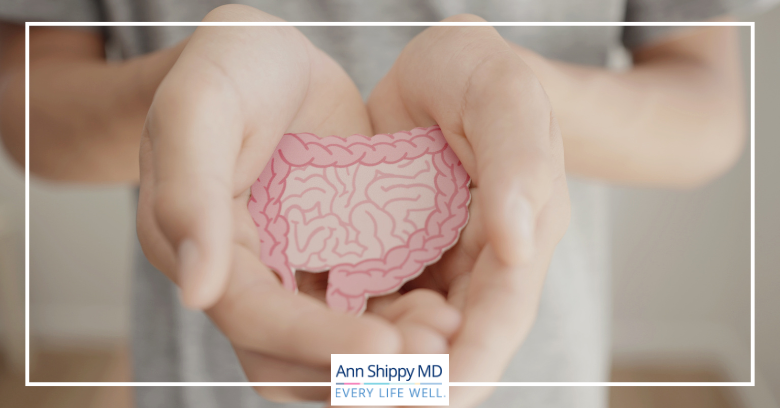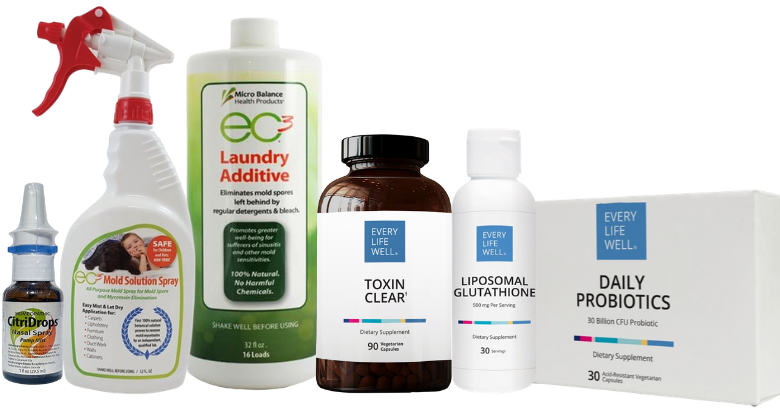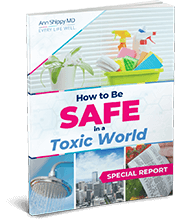Mold Toxicity Disguised
Did you know that up to 50 percent of buildings contain toxic mold? And that toxic mold exposure can make you sick.
This is especially true if you are genetically susceptible or have some underlying imbalance already putting pressure on your immune system.
Mold toxicity is prevalent, yet underdiagnosed. It might even be dismissed or hard to get an accurate diagnosis. It’s also common for someone to see many practitioners before finding answers.
The truth is that in our modern world, we cannot overlook environmental factors in medicine.
Environmental toxins often trigger or contribute to disease and most people are sadly under-cared for since many medical professionals aren’t properly trained to assess, diagnose or treat environmental toxin – related conditions.
Today, we are going to dive more into the topic of mold and mold toxicity to inform and empower you.
Continue reading to learn more about:
- What is mold?
- What is mold toxicity?
- What can mold toxicity be disguised as?
- What steps can be taken to recover from mold toxicity and regain health
Let’s get started!
What Is Mold?
Mold is a type of fungi that is millions of years old. It grows where there is moisture, both indoors and out.
It’s a natural part of the environment in low ambient amounts but may become concentrated when there is water damage or higher humidity in a home or building.
Read Surprising Places to Find Mold in Your Home to learn more about the low ventilation places where mold thrives. Mold is also common in rentals, including college dorms.
Mold produces metabolites, some of which are called mycotoxins – many are pathogenic to plants, animals and humans.
Mold spores in the air are inhaled and make their way into the body via the respiratory system.
Mycotoxins enter the body through the respiratory system, skin or are ingested along with the food we eat.
Certain foods including grains, dairy and nuts can be high in mycotoxins.
Mold Toxicity
When exposed to toxic mold, mycotoxins often accumulate in the body leading to mold toxicity or mold related illness.
Mold toxicity manifests in different ways for different people. The impact may depend on the species of mold, the amount and length of exposure and underlying health factors such as nutrition status, immune function and underlying conditions.
Genetics also play a role in an individual’s susceptibility to mycotoxins.
For example, a mutation in the genetic code for the MTHFR enzyme, involved in methylation, makes it more challenging for someone to detoxify mycotoxins.
Mold and mycotoxins are often pro-inflammatory, contributing to chronic inflammation, changes in the immune response and respiratory disease.
The most common symptoms experienced from mold exposure are in the respiratory tract.
Correlations have been made with:
- Asthma
- Irritation to the respiratory tract and eyes
- Allergic respiratory disease
- Runny nose
- Respiratory infections including bronchitis
- Shortness of breath
- Chronic cough
- Sinus congestion
These symptoms are like what one might experience from other forms of air pollution.
Mold exposure can lead to both increased hypersensitivity to the environment and a decreased defense against infections. Because of this altered immune function and increased inflammation, symptoms often become systemic.
Mold toxicity is considered a multi-system and multi-symptom disease, affecting not only the respiratory tract and immune system, but the brain, gastrointestinal tract and other organs are greatly affected.
Some of the systemic symptoms of mold toxicity include:
- Decreased memory and concentration
- ‘Brain fog’
- Depression, anxiety, OCD
- Headaches and migraines
- Visual changes
- Changes in sleep patterns
- Decreased immune resilience, frequent infections
- Decreased stress tolerance
- Fatigue
- Weakness
- Muscle cramps, fasciculations
- Joint pain and stiffness
- Light sensitivity
- Neuropathy
- Autoimmunity
- Diarrhea, nausea, abdominal discomfort
- Vertigo
Mold Toxicity and Its Many Disguises
Many people with mold toxicity appear well and routine lab work comes back “normal,” making it a hidden disease.
It’s not uncommon for someone to have seen multiple practitioners, without a diagnosis or symptom relief.
In Functional Medicine, we take a root cause approach, which includes evaluating environmental triggers. We consider the confounding factors mold toxicity may have and symptoms that overlap with other diseases.
Mold toxicity may be the root cause of illnesses.
Here are some possible conditions where mold toxicity might be the root cause:
- Psychiatric symptoms. Some mycotoxins are neurotoxins that directly lead to inflammation. Psychiatric symptoms where mold toxicity could be a factor include:
- Depression
- Anxiety
- Attention issues
- OCD
- Insomnia
- Cognitive decline
- Leaky gut and dysbiosis. Mycotoxins can damage gut health by increasing intestinal permeability (leaky gut) and inducing changes in the microbiome. Changes in gut health affect immunity and may contribute to food sensitivities and the development of autoimmune disease. Mold toxicity is sometimes misdiagnosed as irritable bowel syndrome, or IBS.
- Mast cell activation syndrome. Mold exposure can activate mast cells, releasing the histamines and other inflammatory molecules. Many symptoms of mast cell activation syndrome overlap with mold toxicity and mold is clearly a mast cell trigger. Histamine intolerance, another related condition, may be linked to mold toxicity in some cases.
- Chronic infections. Mold toxicity can be a trigger for the reactivation or exacerbation of hidden infections, including Epstein barr virus, Lyme disease or parasites. You may have overcome these in the past, only for them to reemerge or worsen when triggered by mold exposure.
- Electromagnetic hypersensitivity. EMFs refer to the primarily man made electromagnetic fields that we are exposed to by using electricity and technology. Those who are sensitive may experience a collection of systemic symptoms, termed electromagnetic hypersensitivity syndrome, or EHS. From a clinical perspective, some with mold toxicity experience EMF sensitivity.
- Chronic fatigue syndrome and fibromyalgia. Both conditions have signs and symptoms in common with mold toxicity. Underlying mold toxicity may affect the immune system, chronic infections and other factors that lead to fatigue and pain.
Considering possible mold exposure makes sense in a variety of cases, we must always be working to understand how the environment is affecting our health.
How To Recover from Mold Toxicity
As if diagnosing mold toxicity wasn’t complicated enough, recovering from mold toxicity also presents challenges.
The accumulation of mycotoxins in the body takes time to remove and many are sensitive to pushing detoxification protocols too quickly.
Here are some steps to consider in addition to working with a mold-literate Functional Medicine practitioner:
1. Test don’t guess. Mold is widespread in indoor spaces, and other toxins may play a role as well. We suggest testing the body for mold using the Myco-Tox Profile from Mosaic Diagnostics (formally Great Plains Labs) as well as for other toxin exposures. Consider the GPL Chemical Profile that screens for 172 toxins or other specialized testing recommended by your provider.
If mold is in the body, it’s time to test the home. Also consider that workplaces, vehicles or other indoor places where you spend time could be the source of mold.
For testing resources, download Dr. Shippy’s free guide: Could it be Mold?
2. Get out! One of the biggest factors in recovering from mold toxicity is removing yourself from the moldy environment. That might mean relocating while the mold is remediated or moving to a new mold-free space.
3. Adopt a low-mold diet. A Paleo diet is a great place to start as it removes some of the foods highest in mold including processed foods, grains and dairy. Many of these recipes represent low-mold options.
4. Filter indoor air. This is an important step for everyone, whether sensitive to mold or not. Quality air filters remove circulating mold spores, but also particulate matter, airborne toxins and even viruses. I like IQ Air and Austin Air systems.
5. Use binders. Binders, such as activated charcoal, certain clays and pectin bind to toxins in the digestive tract and help to remove them from the body. Toxin Clear is an example of a binder that I use in my practice.
The specific binder to use corresponds with the type of mold toxicity revealed by testing. Also, note that binders bind to minerals and other nutrients, so be sure to take them away from food and other supplements.
6. Target supplements to support detox. Supplements are a great tool to use in supporting the body’s detoxification of mycotoxins.
Options to consider are:
- Liposomal Glutathione
- NAD and other mitochondrial support
- B vitamins or other methylation support
- Probiotics
The Every Life Well Mold Recovery Kit combines several of these supplements. We also offer safe products to clean mold from your home surfaces and fabrics.
7. Sweat it out! Sweating supports the elimination of toxins through the skin. Consider using an infrared sauna a few times per week. When you sweat, don’t forget to replace water and electrolytes to keep the body hydrated.
8. Move your lymph. The lymphatic system is a key part of removing accumulated toxins from the body. Effective ways to stimulate the lymph flow include exercise, dry brushing and lymphatic massage.
_____________________________________________
Some molds are human pathogens, and while it can’t fully be avoided, there is a lot that can be done to remove mold sources from the home and mold toxins from the body.
The first step is awareness. While much of conventional medicine continues to deny the role that toxins play in the development of disease, Functional Medicine is always looking through a root cause lens.
_____________________________________________
Have you been exposed to toxic mold?
Are you struggling with how to address it and where to go for help?
I’ve curated and consolidated all my mold-related resources into this comprehensive MOLD HUB page, designed to assist and support you on your path to healing.
This page includes information on how to test your body and your home for toxic mold, a free guide on how to determine if mold is causing your symptoms, diet, supplements and other lifestyle tools to support detoxification and healing, my Mold Toxicity Workbook, articles and podcasts on toxic mold and related illnesses as well as an FAQ section.
Resources and tools will update and change, so be sure to bookmark this page and check it periodically.
References
- https://pubmed.ncbi.nlm.nih.gov/21269928/
- https://pubmed.ncbi.nlm.nih.gov/32078193/
- https://pubmed.ncbi.nlm.nih.gov/26010737/
- https://pubmed.ncbi.nlm.nih.gov/21078183/
- https://www.ifm.org/news-insights/mold-toxicity-pathways-diseases-interventions/
- https://www.townsendletter.com/article/the-link-between-mold-toxicity-and-occult-infections-functional-medicine-leads-the-way/
- https://pubmed.ncbi.nlm.nih.gov/21954354/
- https://www.psychologytoday.com/us/blog/holistic-psychiatry/201708/mold-toxicity-common-cause-psychiatric-symptoms
- https://pubmed.ncbi.nlm.nih.gov/27417439/













